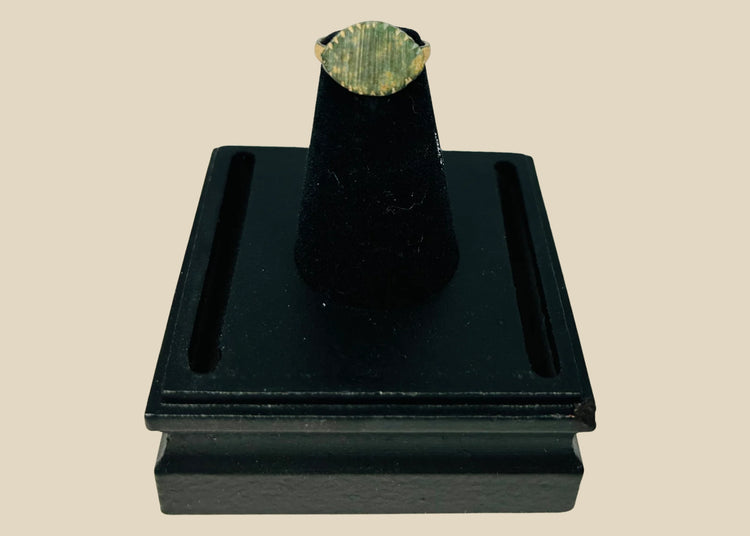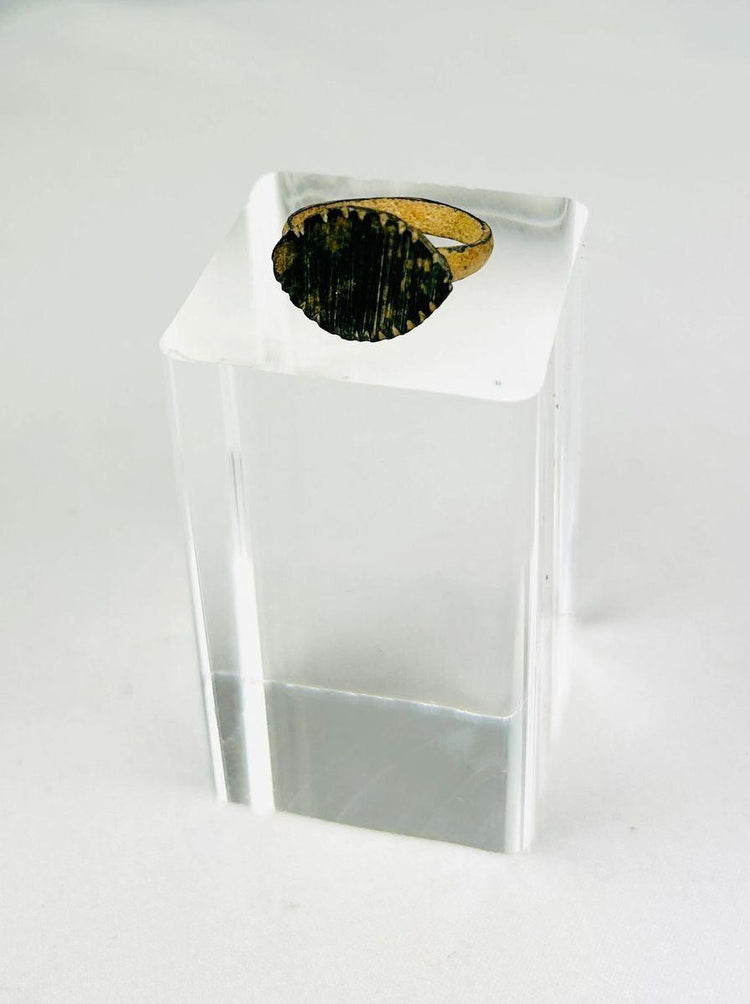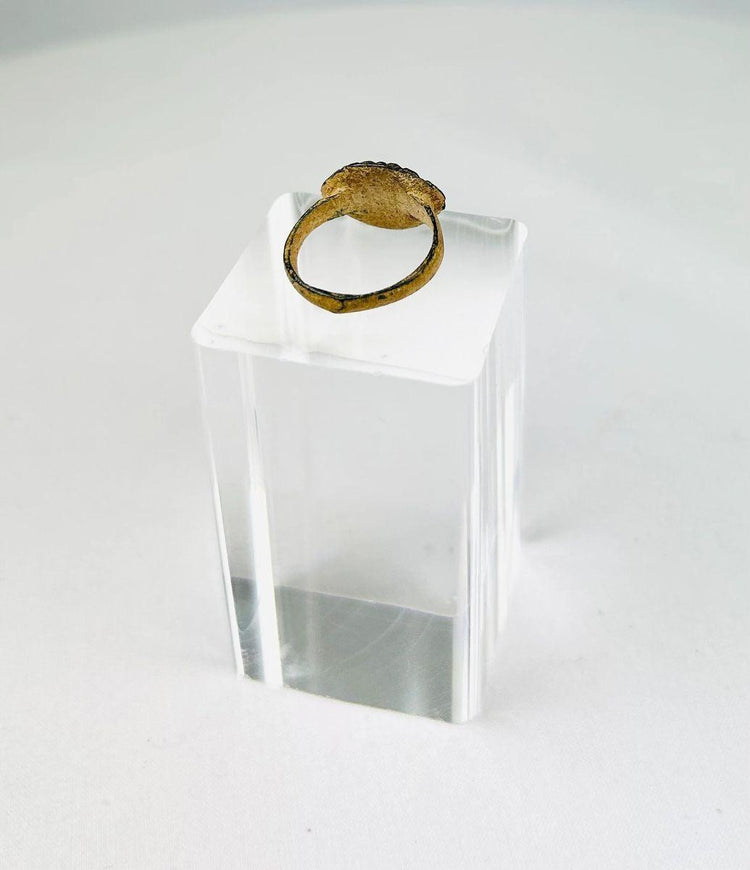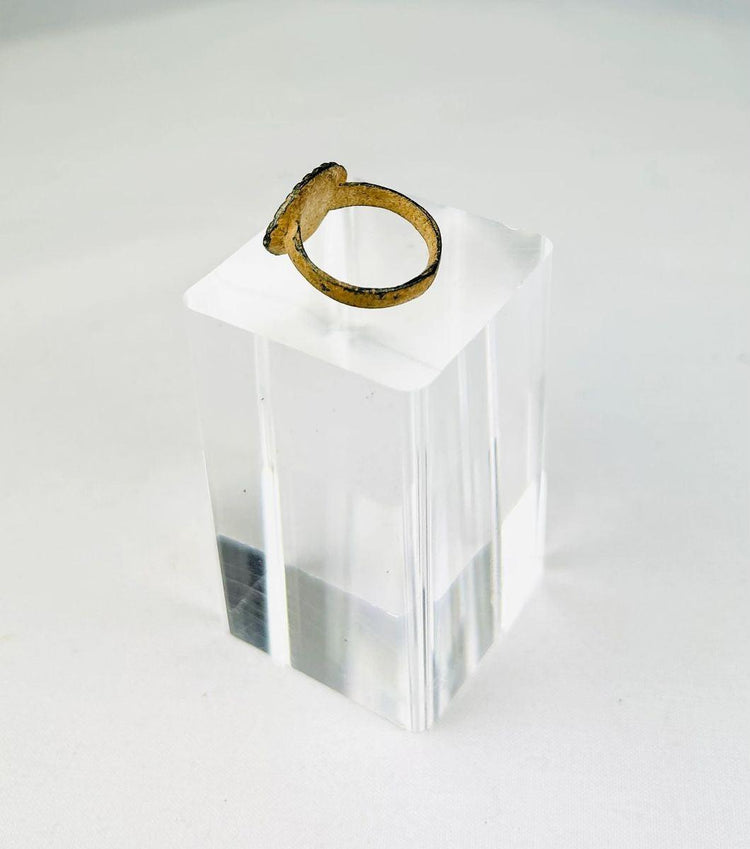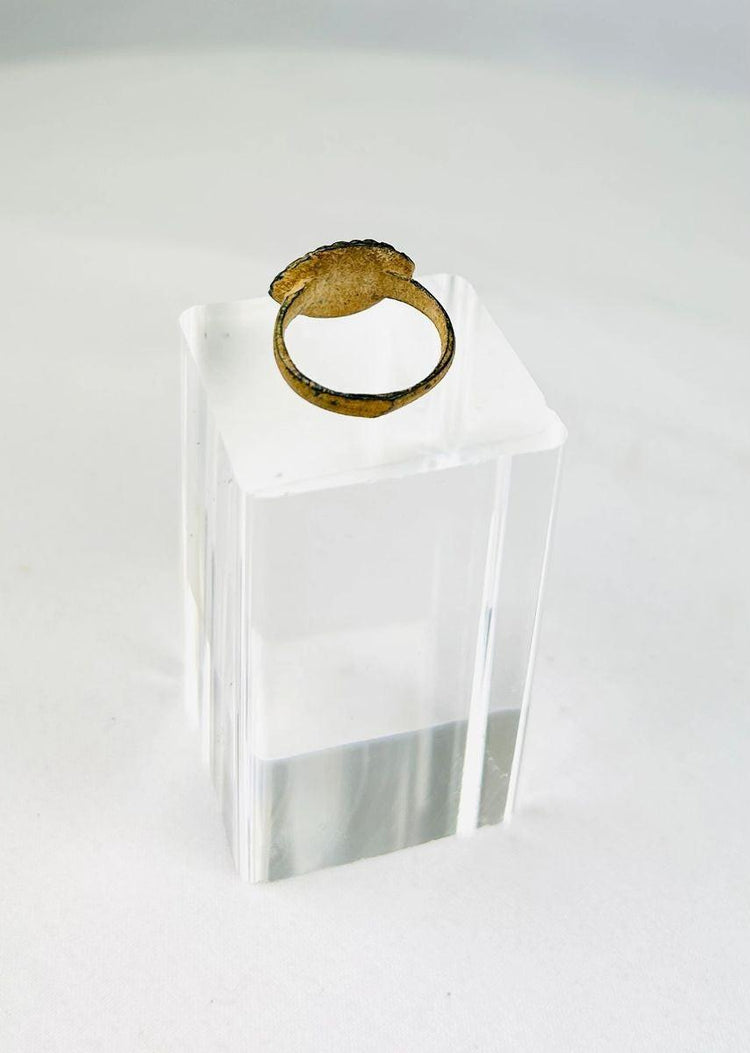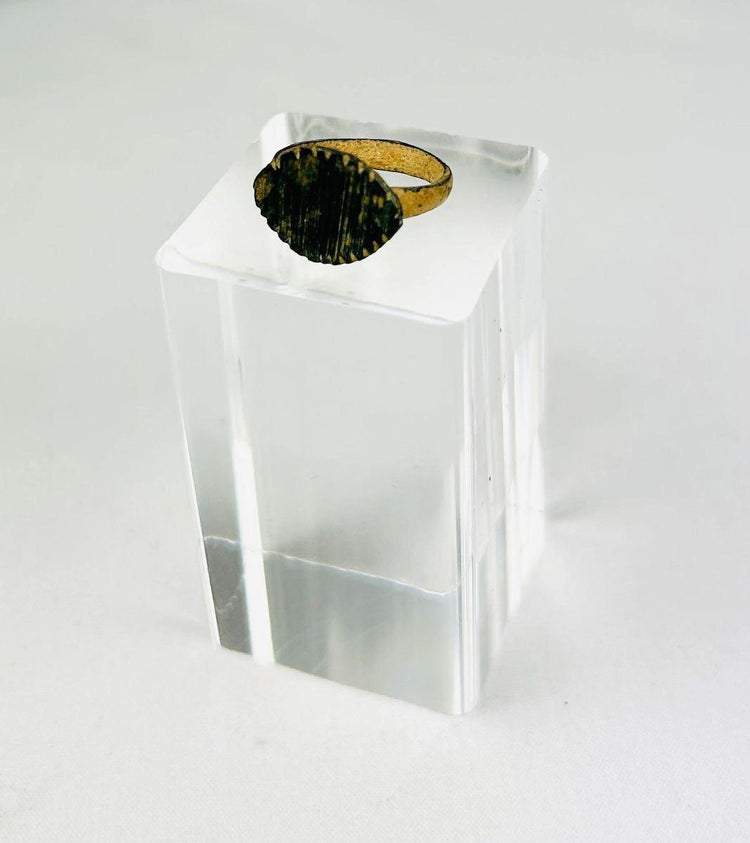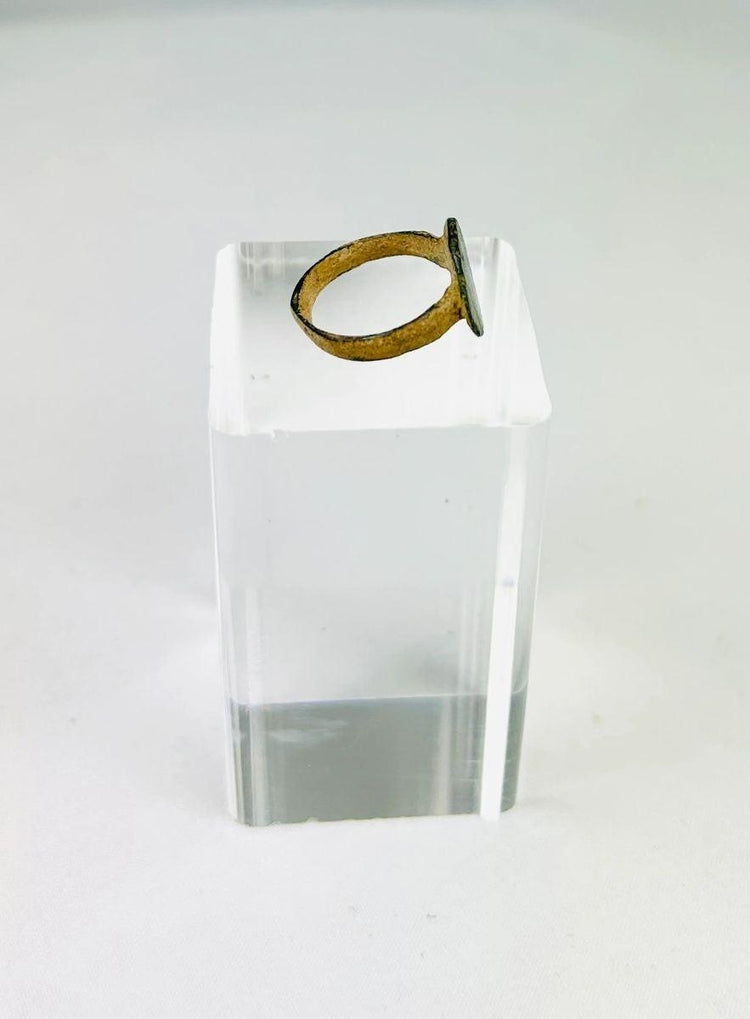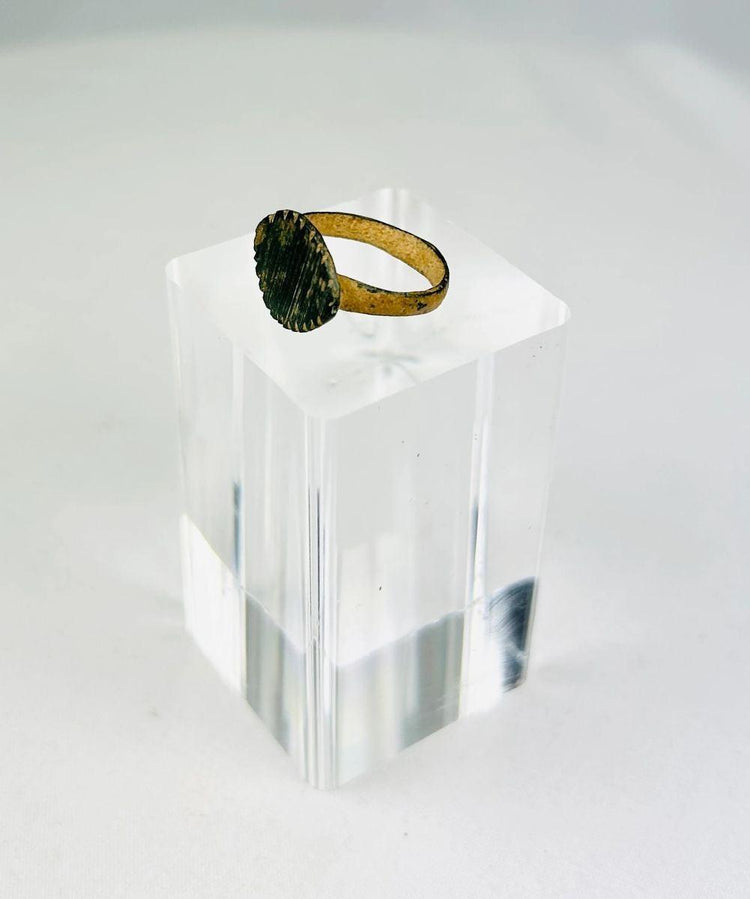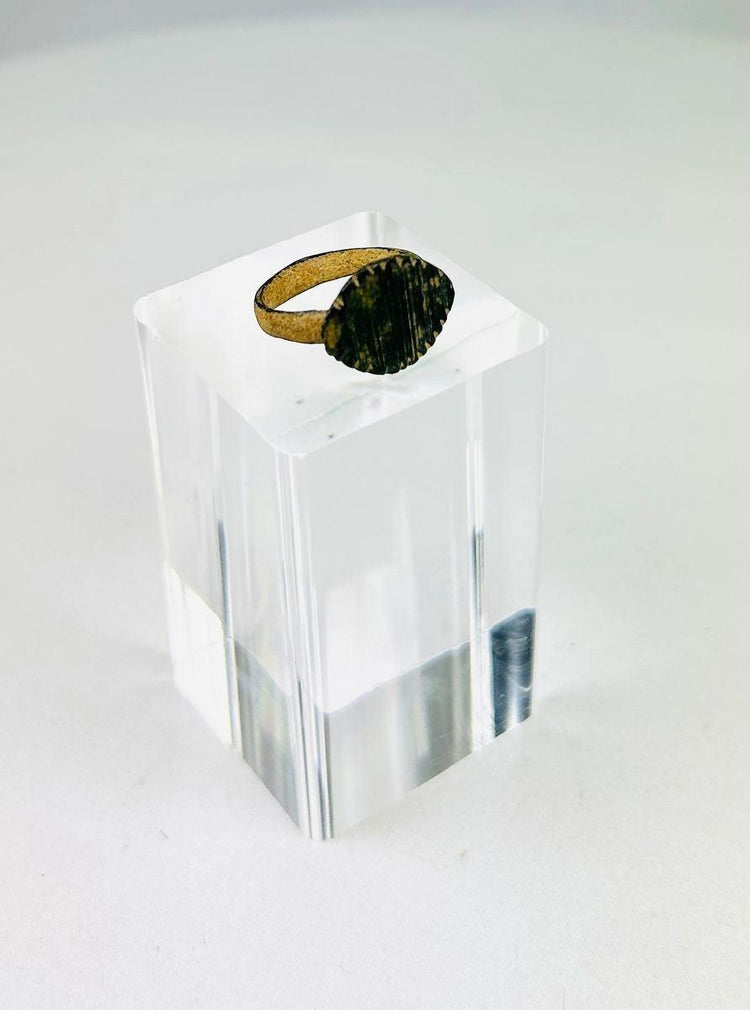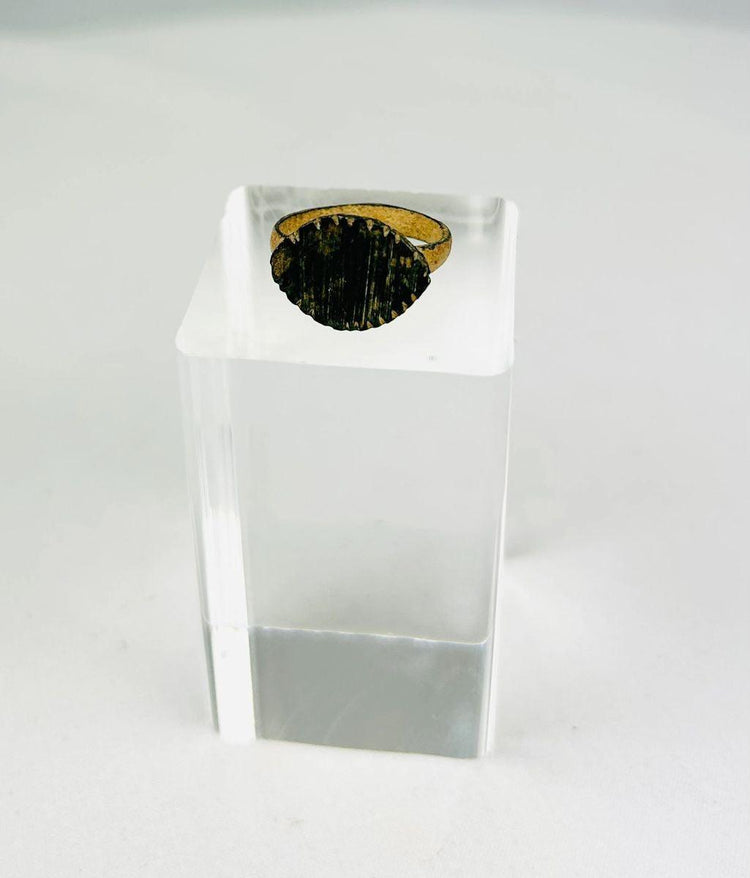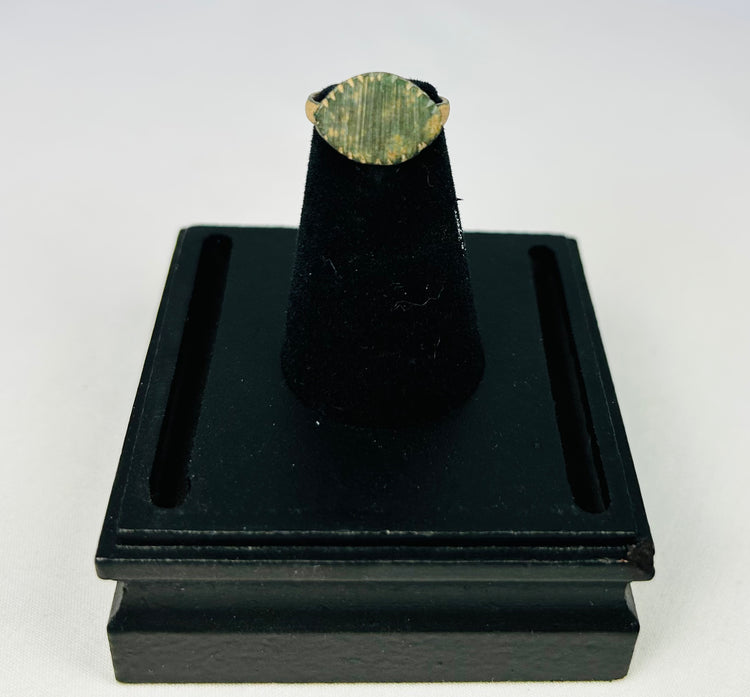Imperial Roman | Bronze Ring Featuring Incised Linework Circa 2nd–4th Century AD
Description
More
Less
Historical Context & Origin
Region: Imperial Roman Empire
Material: Bronze
Period: Circa 100–300 CE
Description
This authentic Ancient Roman bronze ring, dating to the 2nd–4th century CE, features a solid cast construction with a prominent oval bezel incised with vertical linear motifs. Such designs were common among personal signet rings in the Roman provinces, serving both decorative and practical purposes. The warm green burial patina, with traces of earthen deposits and exposed highlights along the band, reflects centuries of age and use. Crafted with utilitarian elegance, this ring would likely have been worn by a merchant, soldier, or an individual of modest social status, embodying the Roman blending of form, identity, and function.
Features
- Raised oval bezel with incised vertical linear design
- Solid cast bronze construction with intact hoop
- Green archaeological patina with earthen encrustations
- Gentle curvature of the band from long-term wear
- Representative of Roman daily adornment and sealing practices
Cultural Significance
Roman bronze rings were more than personal adornments—they served as functional seals and indicators of social identity. The engraved bezel would have been pressed into wax or clay, providing a unique mark of authenticity in a world where literacy was limited. Rings like this highlight the practical artistry of Roman metalworkers and offer insight into the routines, transactions, and identities of individuals across the Empire.
Condition
Excellent preservation for its age. The surface exhibits minor pitting and natural corrosion consistent with centuries of burial, while the bezel engraving remains well-defined. Structurally sound with no modern repairs or restoration, retaining both authenticity and archaeological character.
Dimensions (approximate)
Ring Size: US 3
Age
Approximately 1,700–1,900 years old
Description
Historical Context & Origin
Region: Imperial Roman Empire
Material: Bronze
Period: Circa 100–300 CE
Description
This authentic Ancient Roman bronze ring, dating to the 2nd–4th century CE, features a solid cast construction with a prominent oval bezel incised with vertical linear motifs. Such designs were common among personal signet rings in the Roman provinces, serving both decorative and practical purposes. The warm green burial patina, with traces of earthen deposits and exposed highlights along the band, reflects centuries of age and use. Crafted with utilitarian elegance, this ring would likely have been worn by a merchant, soldier, or an individual of modest social status, embodying the Roman blending of form, identity, and function.
Features
- Raised oval bezel with incised vertical linear design
- Solid cast bronze construction with intact hoop
- Green archaeological patina with earthen encrustations
- Gentle curvature of the band from long-term wear
- Representative of Roman daily adornment and sealing practices
Cultural Significance
Roman bronze rings were more than personal adornments—they served as functional seals and indicators of social identity. The engraved bezel would have been pressed into wax or clay, providing a unique mark of authenticity in a world where literacy was limited. Rings like this highlight the practical artistry of Roman metalworkers and offer insight into the routines, transactions, and identities of individuals across the Empire.
Condition
Excellent preservation for its age. The surface exhibits minor pitting and natural corrosion consistent with centuries of burial, while the bezel engraving remains well-defined. Structurally sound with no modern repairs or restoration, retaining both authenticity and archaeological character.
Dimensions (approximate)
Ring Size: US 3
Age
Approximately 1,700–1,900 years old
You May Also Like




























